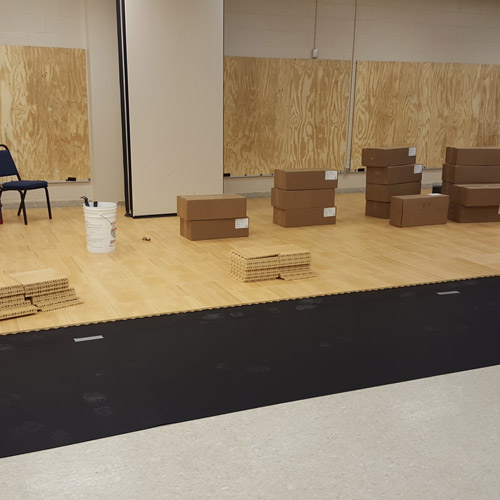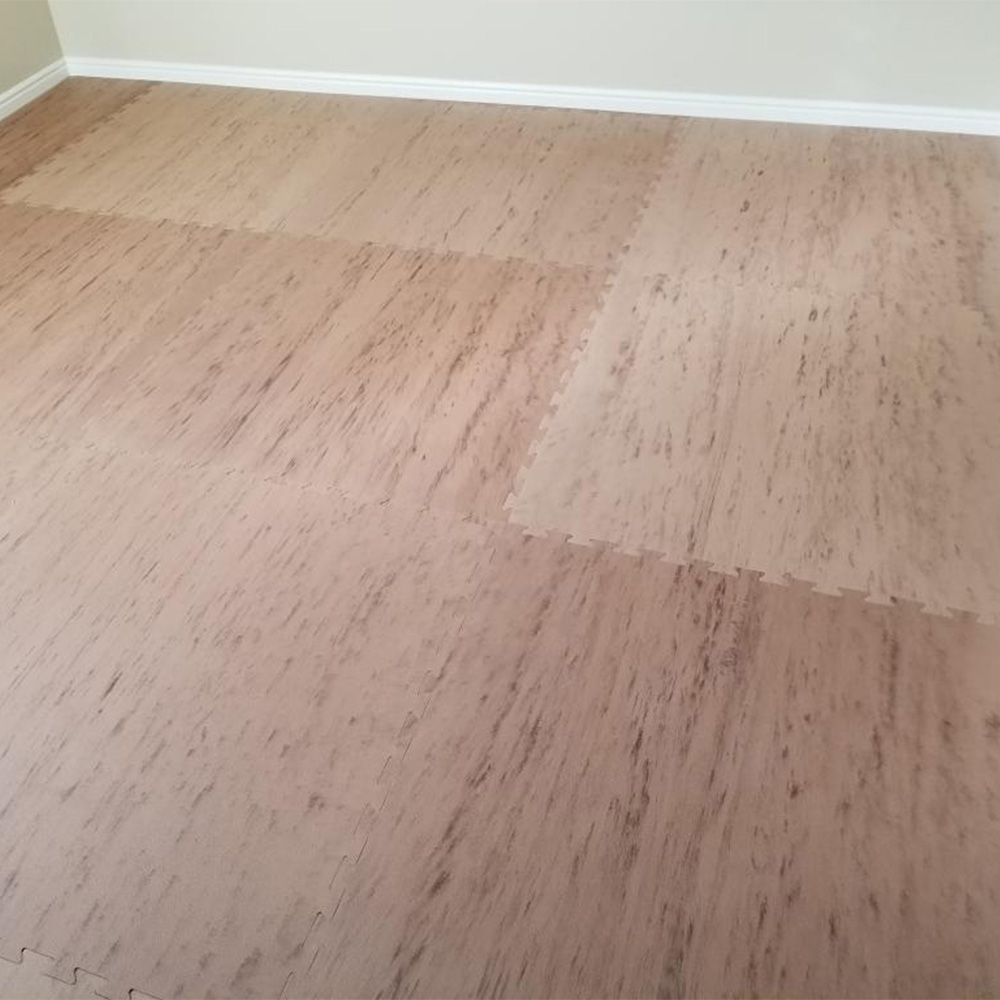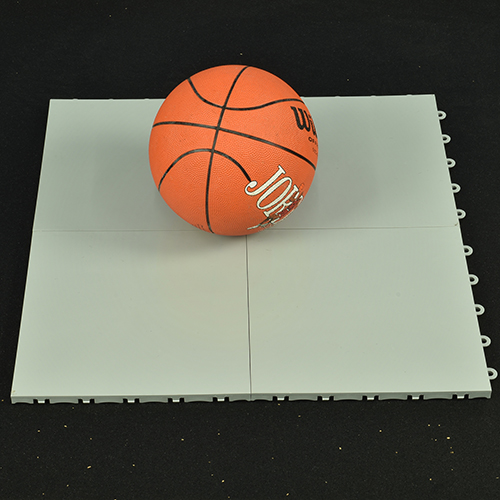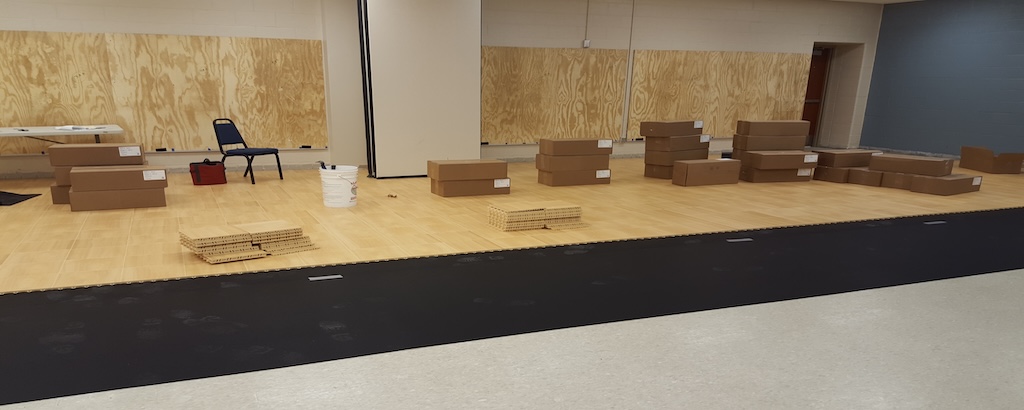If you’re installing flooring, you may need to pair it with an underlayment. Underlayments play important roles in the success of many flooring installation projects. It’s important to understand what different types of underlayments do so you can choose the product that’s right for your project.
Article Library
Showing 1-12 of 39

What Are The Pros and Cons of Cork Flooring?

How Does Sound Floor Underlayment Work?

Why Are There Color Inconsistencies Between Batches of Flooring?

What Is A Sprung Floor And What Are The Alternatives?

Greatmats Glossary Guide to Specialty Flooring Terminology

Portable Dance Subfloor for Stage Installations

What's the Best Rubber Underlayment for Floors?

DIY Dance Subfloor Elite for Marley Dance Floors

Home Dance Subfloor Features and Benefits Video

Portable Base Layer for Home and Traveling Dance Floors

What Is A Drainage Mat Made From?

Designer Gym Foam Mats - Sports Tiles and Dance Underlayment
Video Library
Showing 1-5 of 5

How To Install StayLock Tiles Smooth Top - Waterproof Basement Floor Underlayment

Use Our Waterproof PVC StayLock Floor Tiles for a Basement Subfloor

Tips on Creating a High Quality Video for Greatmats Reviews

TurfShok Rubber Underlay - Durable Underlayment for Artificial Turf

How to Connect Roof Open Drainage Tiles for Artificial Turf Systems
Why Use Underlayment?
An underlayment performs several important functions. This extra layer can help to eliminate imperfections in the subfloor.Underlayments can also help to create a flat, uniform surface that you can install plank flooring, floating tiles, and flooring rolls over. Many of these underlayment options add extra cushion, making your flooring more comfortable and forgiving.
A quality underlayment can also offer valuable sound-dampening properties. This is particularly important in residential applications, and it can help to prevent harder flooring types, like wood floors, from resounding against a hard subfloor.
Finally, underlayments can also provide thermal protection properties. They can help to reduce the cold that travels from the subfloor to your flooring, making the flooring more comfortable and warmer.
Common Underlayment Features
As you shop, you’ll find that there are many types of underlayment available, and different materials offer different features and benefits. Underlayments are made of both natural and synthetic materials.Rubber Underlayment
Rubber underlayment is known for its superior durability, so it can be used not only in residential spaces but also in commercial gyms and other areas that see intense use. A rubber underlayment roll won’t lose its cushioning properties over time.
Rubber is also known for its acoustic and sound-dampening properties. This highly dense underlayment lays flat, and some products are treated with an antimicrobial ingredient to help prevent mold, mildew, and bacteria growth.
Cork Underlayment
Cork underlayment tends to be highly durable, and it’s often installed in commercial applications. Cork is known for its excellent soundproofing qualities, and it can help to dampen and reduce the sound generated when you walk through an apartment or other space.
Cork is also completely natural, making it an eco-friendly and sustainable choice. It’s hypoallergenic, so it’s a versatile underlayment suitable for many settings.
Foam Underlayment
Foam is another popular option for underlayments, and it can be paired with a traditional underlayment to give you extra cushion and sound-dampening properties. While foam isn’t as durable as rubber or cork, covering it with a solid flooring surface can help to protect it.
Foam tiles can be added to your subfloor when you’re installing a dance floor or other type of flooring. It can help to create a quiet environment and offers some leveling benefits, too. Foam is often used underneath carpeting for extra cushion and to create a level, uniform surface.
When to Avoid Using Underlayment
There are some situations where you might want to avoid an underlayment. Typically this would be a situation where moisture is present and you need drainage and airflow to take place. In those situations, raised modular tiles may be ideal. (In some cases, those raised tiles can even serve as the underlayment for another flooring system.)There's also the situation where having a built-in underlayment with your flooring is preferred. Rather than purchasing a separate underlayment, consider using a product that already has this layer attached.
Greatmats offers several tile options that are equipped with a foam underlayment backing. These tiles are easy to install and can save you time when compared with laying an underlayment and then installing tiles on top.
These tiles equipped with a foam back give you some of the same properties of an underlayment. The foam provides cushioning and sound absorption properties, so the finished flooring product is enjoyable and durable.
Choosing the Right Underlayment for Your Project
The right underlayment for your project will depend on the type of flooring that you’re installing, as well as the challenges that you’ll face in the installation location.Start by thinking about what features you want your underlayment to add to your flooring.
Are sound dampening, temperature insulation, and cushioning important?
Next, review any recommendations made in your flooring product’s installation instructions. Many manufacturers will recommend particular types or even particular brands of underlayments that work well with their products.
If you need additional help in choosing an underlayment, don’t hesitate to give our Greatmats customer service team a call. We stock a wide variety of underlayment products at Greatmats, and our flooring experts would be happy to help you choose the product that’s right for your project.
What happens if you don't use underlayment?
If you don’t use an underlayment, you might experience quality and performance issues with your flooring. For example, if you’re installing vinyl tiles over a subfloor that isn’t completely flat, an underlayment can help to correct that.Without an underlayment, the tiles may sit unevenly and could even start to pull apart at the seams.
If you’re working with a flat subfloor, you could still experience other downsides if you don’t use an underlayment. Underlayments add a bit of cushion to hardwood and other types of flooring, and your floors might feel hard and unforgiving without them.
Some underlayments offer valuable sound dampening and thermal regulation properties. Without an underlayment, your floor might be unusually cold underfoot. Walking on the floor might also generate unusual amounts of noise.


